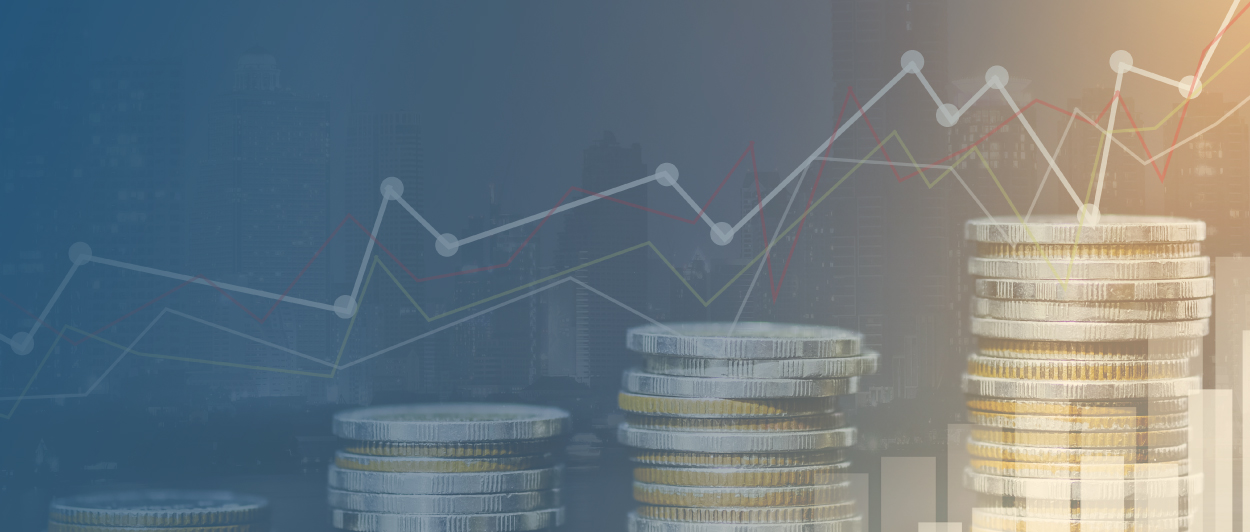The Economics for Business Podcast
A podcast based on the winning principle that entrepreneurs need only know the laws of economics plus the minds of customers. After that, apply your imagination.

214. Professor Shawn Ritenour: The Vital Role Of The Entrepreneur In Economic Development
Entrepreneurship is well-defined in economics, and well-recognized as the engine that drives economic growth. That means people enjoying greater well-being, including but not limited to material prosperity.

213. Sharekh Shaikh On The Digital Revolution In Market Research
Market research is a tool for gathering data about customers and consumers that businesses hope will lead to insights about their behaviors and preferences that can be translated into innovation, better service and better business performance.

212. Graceann Bennett: Brands Are Value-Generating Assets, Marketing Is Just Tactics
Peter Drucker famously identified the only two value-generating functions of the firm as innovation and marketing. We propose to differentiate brand building (or branding) from marketing, especially in this digital age.

211. Jeff Grogg: Building The New Production Structure Of Entrepreneurial Capitalism
It’s time to re-imagine how entrepreneurs bring their innovative value propositions to market at the appropriate scale to meet the important needs of millions of people.

210. Steven Blustein: A New Structure Of Production—The Plug-in Entrepreneurial Network
A lot economic thinking about the structure of production and entrepreneurs’ challenges in the assembly of resources can be revised in the 21st Century.

209. Lipton Matthews: A 5-Way Global Perspective on Innovation and Entrepreneurship in the USA
Entrepreneurship and innovation are the keys to economic growth and higher standards of living. The USA has long enjoyed leadership status on these dimensions — people see the USA as the land of entrepreneurs and the source of new ideas and advances in business. Is the reputation still deserved? Or is it being eclipsed as part of the general decline in standards and capabilities that we observe? Lipton Matthews is a global economic and geo-political analyst who brings deep knowledge and expertise to address our concerns.

208. Melissa Swift: Human Action To Build A Powerhouse Workplace
What can economics tell us about designing fulfilling jobs and productive workplaces? Quite a lot if we apply the economics of subjective value and empathy. Melissa Swift is the author of Work Here Now: Think Like A Human And Build A Powerhouse Workplace. She discusses her research on the Economics For Business podcast.

207. Erik Schön: The Art Of Strategy
What is strategy, and is it useful for business? Business schools want you think it is the critical factor in competitive success or failure. They teach structured markets, divided up by market share, with boundaries and external and internal forces to be assessed and countered. “Where to play and how to win.” They see strategy through their lens of financialization and utilize fictitious economic calculations like discounted future cash flows and market capitalization. There’s very little Austrian flavor in their view — no acknowledgement of subjective value and the qualitative drivers of value, customer sovereignty, empathy, constantly changing customer preferences, no role for the entrepreneur in helping customers learn what they can want in an evolving world.
Our guest Erik Schön provides us with an entirely different view of strategy, which he arrives at via a synthesis of three great strategists: Sun Tzu, John Boyd, and Simon Wardley.
Knowledge Capsule
Strategy is how to survive and thrive and, for a business, the key tool is harmonization.
Sun Tzu identified Purpose as the fundamental factor that keeps people united: customers, producers, suppliers, partners, owners, executives, employees, supporting each other without fear through success and failure.
In Sun Tzu, there are four more fundamental factors:
Landscape — your business environment.Climate: the forces acting on the environment.Doctrine: ways of operating.Leadership: actions, decisions, choices, and gameplays.
Master all five to succeed, or else fail.
John Boyd added the dynamics of continuously changing intentions within the pursuit of the realization of purpose. (We find reflections here of Mises’ concept of constant flux — everything changing all the time.) Boyd’s definition of strategy Is a mental tapestry of changing intentions for harmonizing our efforts to realize purpose in a world that can be bewildering.
The purpose of strategy is to improve our ability to adapt: a vision that magnifies the strength and commitment of its adherents, and a grand ideal or noble philosophy providing a binding paradigm for all.
Boyd’s famous framing of the learning process to develop the ability to adapt is the OODA Loop.
[[{"fid":"138778","view_mode":"image_no_caption","fields":{"format":"image_no_caption","alignment":"center","field_file_image_alt_text[und][0][value]":"John Boyd’s OODA Loop","field_file_image_title_text[und][0][value]":false,"field_caption_text[und][0][value]":"","field_image_file_link[und][0][value]":""},"type":"media","field_deltas":{"1":{"format":"image_no_caption","alignment":"center","field_file_image_alt_text[und][0][value]":"John Boyd’s OODA Loop","field_file_image_title_text[und][0][value]":false,"field_caption_text[und][0][value]":"","field_image_file_link[und][0][value]":""}},"attributes":{"alt":"John Boyd’s OODA Loop","class":"media-element file-image-no-caption media-wysiwyg-align-center","data-delta":"1"}}]]
For Wardley, strategy is the art of moving in and manipulating an environment using tools such as positioning and technological innovation. Wardley’s major contribution is to visualize strategy in the form of a map where the X-axis is movement in the environment in predictable steps:
Genesis: a new technology or solution or brand is introduced; it’s unique.Custom built: a company identifies ways to serve customers with constructed products and services from the new origin.Product: move from custom built to standardization, including sourcing standard parts from suppliersCommodity: there’s nothing left that’s unique, many companies can be producers.Evolution: a new genesis emerges.
The automobile industry provides an example.
Genesis: the first internal combustion engine.Custom built: the first car brands, often from craftsmen and small workshops.Product: Many suppliers, competitive differentiation (Ford versus GM).Commodity: ICE automobiles produced in many countries (Japan, South Korea, China, Italy, etc.) with limited customer differentiation.Evolution: the beginning of the EV era.
Wardley’s approach is that all markets exhibit this evolution. It’s important to know the current landscape and predict the future landscape, moving through it with “the why of purpose” (to survive and thrive) and “the why of movement” (taking a particular action that moves you through the landscape). Everything evolves through supply and demand competition.
[[{"fid":"138779","view_mode":"image_no_caption","fields":{"format":"image_no_caption","alignment":"center","field_file_image_alt_text[und][0][value]":"Climatic Pattern","field_file_image_title_text[und][0][value]":false,"field_caption_text[und][0][value]":"","field_image_file_link[und][0][value]":""},"type":"media","field_deltas":{"2":{"format":"image_no_caption","alignment":"center","field_file_image_alt_text[und][0][value]":"Climatic Pattern","field_file_image_title_text[und][0][value]":false,"field_caption_text[und][0][value]":"","field_image_file_link[und][0][value]":""}},"attributes":{"alt":"Climatic Pattern","class":"media-element file-image-no-caption media-wysiwyg-align-center","data-delta":"2"}}]]
The Sun Tzu, Boyd and Wardley approaches to strategy can be combined in the concept of the Strategy Cycle, Strategists move continually through the phases and components.
[[{"fid":"138780","view_mode":"image_no_caption","fields":{"format":"image_no_caption","alignment":"center","field_file_image_alt_text[und][0][value]":"the Strategy Cycle","field_file_image_title_text[und][0][value]":false,"field_caption_text[und][0][value]":"","field_image_file_link[und][0][value]":""},"type":"media","field_deltas":{"3":{"format":"image_no_caption","alignment":"center","field_file_image_alt_text[und][0][value]":"the Strategy Cycle","field_file_image_title_text[und][0][value]":false,"field_caption_text[und][0][value]":"","field_image_file_link[und][0][value]":""}},"attributes":{"alt":"the Strategy Cycle","class":"media-element file-image-no-caption media-wysiwyg-align-center","data-delta":"3"}}]]
The reference to these strategy masters enables businesses to move beyond business school strategy.
Move beyond strategy as wars, battles and combat for market share, towards strategy as individuals, teams and organizations fulfilling their shared purpose.
Move beyond strategy for survival in competitive environments to sustainably thriving in a world with a high rate of change.
Move beyond strategy development as planning, metrics and data towards strategy development for a harmonized direction based on regular assessment of needs (especially customers’ needs) and the organization’s purpose.
Move beyond strategy development as execution and chasing targets to decisions and actions in a harmonized direction by everyone everywhere in the organization based on high situational awareness.
Move beyond business as maximizing shareholder value to business as succeeding together with customers and other stakeholders.
Move beyond leadership for managers and people in hierarchical leader roles to leadership as a service provided by all people in the organization.
Move beyond practices and principles for optimizing parts to harmonizing the whole.
The art of strategy is to succeed by securing harmony among stakeholders, and keeping competition off-balance through evolving better capabilities to influence, adapt and map.
The three strategists offer complementary views of strategic success.
Sun Tzu:
Unite society rather than divide.Unite the organization rather than divide.Unite the team rather than divide.Make the organization resilient by cultivating purpose and doctrine.
Boyd:
A grand ideal, overarching theme, or noble philosophy that individuals can shape and adapt to unfolding circumstances.
Wardley:
Know your user — know your customers and know how to create value through meeting their needs.Set exceptional standards.Be resilient to cope with a wide variety of extremes and changes by rapidly adapting.
The great obstacle to adaptiveness in strategy is inertia in its various forms.
Success breeds inertia, and inertia kills. It’s rarely a lack of innovation that kills companies, but rather inertia caused by pre-existing business models. Any past success with any component or element will tend to create a resistance to change. Inertia is a loss of capital — whether physical, human, social, or financial.
Strategists look to identify different categories of inertia and devise ways to counter them.
Category of inertiaCounterpointPeople resist disruption of past normsPast has evolved / lead the charge Write down cost of legacy, run more efficiently Building future agility Already happening in the market, falling behind Fear of transition to the newLet’s build new skills internally Develop capabilities in-house Develop relationships with new suppliers Work on adapting practices, not scrapping them Are we sure we can make the new work? Don’t seek certainty, seek learning Develop new standards, use open source Use multiple vendors, use brokers Improve supplier relationships Changing business models is hard Avoid death spiral; new approaches e.g., ecosystem Risk mitigation; spin off the old Use rewards, education, training Perfect telling the new story
Leading without pressure and control.
Erik uses the gardening analogy to illustrate the Sun Tzu style of leading without pressure and control. The gardener tends the garden gently, tilling and planting and watering ahead of time, and the flowers grow. Today we might call this style “self-organization”.
The three strategists are very consistent with the action-focused approach to entrepreneurship from Austrian economics. Action is learning. The path is made by walking. Try things out. Draw some Wardley maps as a trial. They’ll take you a long way.
Additional Resources
The Art of Strategy: Steps Towards Business Agility by Erik Schön: Mises.org/E4B_207_Book1
The Art Of Leadership: Purpose and Integrity for Sustainable Success by Erik Schön: Mises.org/E4B_207_Book2
Erik Schön on LinkedIn: Mises.org/E4B_207_LinkedIn
A Collection of Wardley Maps: Mises.org/E4B_207_Maps1
A Wardley Map of the Automobile Industry: Mises.org/E4B_207_Maps2

206. Dr. Samuel Gregg: Our Founding Fathers Designed An Entrepreneurial Republic. Can We Keep It?
Entrepreneurship is by no means exclusively American. But this country has led the way in unleashing, encouraging and elevating entrepreneurship as the creative and virtuous pathway to the creation of new value for all. As a republic, we’ve established the institutional framework in which entrepreneurship can flourish, and entrepreneurs who are successful in creating value reap — and keep — the rewards. Dr. Samuel Gregg, in his book The Next American Economy, examines how this framework was designed at the founding, and discusses what we must all do to preserve it and re-animate it despite the attacks on it from the left.
Knowledge Capsule
Entrepreneurship and the founding of America are intertwined.
America remains the most entrepreneurial country in the world, even if the degree is declining. Our nation has many people willing to pursue the uncertain path of creating new economic value for customers through new products, services and businesses; and, equally importantly, people who will try and buy the new offerings.
Alexis de Tocqueville captured the entrepreneurial character in Democracy In America. He thought everyone in America was entrepreneurial. He noted that those immigrants who arrived would quickly start a business, then move on to another one. He observed the tremendous creative energy of the United States. Immigrants have already embraced change in the act of leaving one country to establish themselves in another, and business entrepreneurship is a direct expression of this same love of change.
In fact, says Dr. Gregg, America was designed by its Founding Fathers — as they plainly expressed in the Constitution, Declaration Of Independence, the Federalist papers and documents like Washington’s Farewell Address - as a commercial republic based on entrepreneurship, and not a political or military or top-down republic or mass democracy. Commerce — or what we would call business — was not viewed with disdain, as it was in aristocratic Britain, but as republican virtue. Washington’s Farewell Address refers to the importance of expanding, of national and international navigation and trading, and about the development of strong markets to give Americans an outlet for their production. Business was viewed as the height of civilizational activity. There was a commercial ethic in the vision of a commercial republic which would grow wealth for all. Economic expectations were high and political institutions were designed to be compatible with these economic expectations.
There is an increasing trend towards government and the administrative state strangling the creative energy of American entrepreneurship.
The erosion of institutional integrity shift and suppresses the creative energy of entrepreneurs. A strong tradition of property rights, in which entrepreneurs can feel confident that they will not only be able to earn but also keep the reward that come from satisfying customers and meeting demand, is an important element of the incentive structure for entrepreneurship. Similarly, entrepreneurs need to feel confidence that commercial disputes will be fairly adjudicated in courts. And they also need to feel confidence that government regulation will not act as an unreversible ratchet of restrictions on their value-creation activities.
The trends in the business environment in the US are currently running in the opposite direction: the property rights of successful entrepreneurs are being increasingly questioned and squeezed, commercial interests are viewed unfavorably in courts, and the regulation ratchet is running in the direction of more, not less, restriction on commerce.
Dr. Gregg sees the anti-entrepreneurship trend beginning in the Progressive Era and gathering pace since the days of Woodrow Wilson. Progressives seek forms of control that will suppress economic uncertainty and social turbulence. The entrepreneurial embrace of change and pursuit of new value must be suppressed. If society and the economy is to conform to their design, unpredictable creativity must be excluded. The progressive control urge took expanded form in the New Deal and the Great Society and all the successive opportunistically explosive expansions of government power.
The anti-entrepreneurial tool is regulation and the administrative state.
Dr. Gregg employs the term corporatism to mean legislators and elected politicians, government departments and their administrative bureaucracies working together with big corporations and NGO’s to impose control through regulation — “attempting to manage everything for everyone else”. Corporatism is very uncomfortable with freedom, and is more than willing to trade off liberty, and the capacity of markets for entrepreneurial competition, in favor of stagnation and the vision of engineering a specific economic outcome. Their preference is for a form of regulatory state capitalism that exerts control over free enterprise.
Recently developed constraints such as ESG and DEI are a manifestation of state capitalism with a particular ideological edge that emanates from left-leaning politics. Companies can no longer have a free choice in the assembly and orchestration of their human capital, which will seriously impair the capacity of the economy to deliver what consumers expect of it.
Most of the government’s regulation is not aimed at any “public good” (e.g., overall workplace safety) but at special protections for specific interest groups. Often, the businesses who are protecting their interests are the ones who, first, initiate the regulation, and second, write it, through their lobbying firms. If citizens were more habituated to asking who is the group behind any specific regulation, there’d be a greater understanding of this problem and a developing distaste for regulation.
Dr. Gregg sees the expansion of state capitalism and the regulatory state as cyclical and capable of reversal.
The trends are in the wrong direction, but are not irreversible. Dr. Gregg expressed great confidence in the ability of Americans to work their way around the regulatory barriers to creative entrepreneurship. He highlighted two of the optimistic themes in his book:
Capital, capital, capital: Regulation has made it increasingly difficult to match up small entrepreneurial businesses with the capital they need. It takes lots of expensive lawyers to navigate the regulatory jungle that exists for capital acquisition in the us. Yet, American entrepreneurs are proving to be just as creative in capital acquisition as in other fields. They can find their way around the regulatory system. Inventions such as crowdsourcing are a good example of new ways to access capital. The fintech industry is entirely dedicated to freer access to capital. Angel funds, regional and local venture capital funds, new entrepreneurial communities (such as Brandjectory) and new two-sided investment platforms provide more impetus.
Deregulate, deregulate, deregulate: If we want to retain the American edge in entrepreneurship, we should focus on reducing the size and scope of the regulation at the local, state and federal level. One of Dr. Gregg’s fears is that individuals become political entrepreneurs, and their efforts are directed towards finding ways to thrive in an expanding administrative state and insufficiently on creating new and improved products. Let’s find creative ways to reduce regulations, rather than creative ways to survive.
Additional Resources
The Next American Economy: Nation, State And Markets In An Uncertain World by Samuel Gregg: Mises.org/E4B_206_Book

205. Ryan Hanley: Dispense Knowledge Freely And Creatively For Customer Retention
One of the most helpful insights of Austrian economics for business is the understanding of uncertainty. To complete a sale to a customer is to take that customer on a journey from high uncertainty to lower uncertainty — sufficiently low that they’ll make a purchase and enter into the experience of ownership or receiving service. We illustrate this principle via the market for small business insurance — a service that our guest Ryan Hanley describes as confusing, time-consuming and costly, i.e., fraught with uncertainty for customers. He addresses the problem by freely dispensing usable knowledge, and explained to Economics For Business how that revolutionizes the industry.
Knowledge Capsule
In a market where knowledge is hard to acquire, a knowledge provider creates new economic value.
The subject of small business insurance is quite opaque for customers. The language is often arcane and the terminology is hard to understand. The type size on contracts is small. It’s often unclear to customers what coverage they need, or what coverage they have, and what coverage they need. Ryan Hanley listened to customers’ questions and requests from his time as a retail sales agent and quickly understood that the provision of easy-to-consume and easy-to-understand insurance knowledge would be immensely valuable to customers. He started writing blogposts and FAQ’s for this purpose.
Expanded experience provides the foundation to be a credible and useful knowledge provider.
Ryan Hanley has held positions in the insurance field from sales agent to VP Marketing to Chief Marketing Officer to CEO. He’s also tried entrepreneurship in other industries. He’s talked to a lot of customers to understand their issues and problems and to try to solve them. This accumulated experience gives him the foundation to be a knowledge provider. He knows what knowledge is missing, what knowledge is most useful, and what form it should take for best delivery.
Knowledge becomes even more valuable to customers when it’s delivered with high empathy.
Ryan stresses that insurance is a superb service. If a customer business experiences a shock — its premises burn down, or it suffers a criminal theft — insurance is there to make things right again. It provides sustainability for a business and reassurance for the business owner and employees. Insurance is a high-empathy service.
However, the customer interface with insurance can be low-empathy — confusing and time consuming, and highly inconvenient to navigate by reading through contracts and filling out forms. Ryan’s solution is “human optimization”: making insurance easier to understand and easier to navigate and providing human contact and the human touch to add value. He points out that the insurtech innovations from Silicon Valley, which aimed to make insurance more efficient via an all-technology / no humans approach, has resulted only in unprofitable and failed startups. Customers need humans to give them trust in a complicated field they don’t understand. Digital automation is not the entire answer.
Freely available knowledge and the human touch combined with better technology elevates the service recipe to a higher level.
Ryan recognized that the native tech for the insurance industry, that had been built up over the years but become frozen and resistant to innovation, was a contributor to customer frustration. His answer was not new digital technology to replace the old, but a clearer identification of the customer problem: the multiple insurance tech systems were not well-connected with each other and not well integrated. The solution lay in better API’s and better software integration, which is what Ryan concentrated on. So now he could bring the human touch, plus new knowledge to fight confusion and opacity, and better technology exhibited as faster flow between content modules.
The business benefit lies in customer relationships and customer retention.
The business model for insurance depends on customer retention. Selling a policy is not profitable on day 1, but becomes profitable over time as cash flows from periodic premium payments. Customer retention is the key to profit and retention reflects satisfaction. Ryan is demonstrating that setting a high standard at the front end of the contract, with a more human interface, freely dispensed knowledge, and convenient navigation of the insurance process, results in profitable revenue streams and a high cash flow ROI over time.
Listening to customers, understanding their needs, and discovering the best way to serve results in retention.
Customers are looking for a special form of reducing uncertainty.
Insurance sells protection from risk. This is math to them, a calculable probability that governs what they charge for premiums and how much capital they need on hand for payouts. For customers, insurance is relief from uncertainty, a subject value that’s not math. They worry about sustainability: will they survive the shock when there is a fire or a crime. Ryan’s approach is to help them advance from high uncertainty (I’m not sure of all the risks, I am not sure what is the right coverage for my business) to lower uncertainty (I’ve been given new knowledge, so I am more informed, I know enough to make a choice of policies and providers). Ryan’s company can customize service (including, for example, matching payments schedules to the seasonality of a customer’s business) so that the customer feels certainty that the service is matched to their need.
Knowledge is education plus creativity. The result is trust.
The kind of knowledge that Ryan dispenses about insurance is education. Recipients are learners, filling in knowledge gaps. It can come in the form of YouTube videos or blogposts or any other form. Ryan’s Rogue Risk site offers hundreds of videos and articles. He is educating the customer base.
Creativity in communication is a vital part of the recipe. Education delivered with creativity stimulates curiosity and productive conversations. Even for a potentially dull subject matter like insurance, creativity add spice and extra interest. Creativity is human, and the human component can deliver trust. Giving knowledge away rather than hoarding it is a great start towards a trusting relationship.

204. Mark Schaefer: Belonging To The Brand — The Business Case For Building a Community Around Your Business
In economics, production and marketing are not separate concepts. Production responds to customers’ needs and marketing is the expression of those needs inside the firm. The entire customer-facing activity of the firm is marketing. Like any other business activity, there is constant flux brought to bear by changing customer preferences, competitive innovation and market evolution. Marketing must be adaptive to change, and a major shift is occurring right now. Mark Schaefer writes about it in Belonging To The Brand: Why Community Is The Last Great Marketing Strategy.
Knowledge Capsule
Established strategies and tactics of marketing are no longer effective.
Marketing thought-leader Mark Schaefer puts it this way: marketing doesn’t work like it used to. The established techniques were biased towards outbound communication, such as advertising, PR and events. Mark classifies these techniques as “interrupt and annoy” to try to get customers to give their attention to feature and benefit of the company’s offerings. The communications environment shifted from analog to digital and from outbound to interactive, but interrupt and annoy remained the primary technique.
Finally, there’s an alternative marketing strategy.
The new strategy goes by the term “community” or “community building”. As economics advises, it’s a product of customer sovereignty. People want to belong to communities that share values and interests. And in the digital age, where work-from-home and glued-to-a-screen are life conditions that can lead to profound loneliness, the need for belonging is amplified. The covid lockdown experience exacerbated the problem.
Community is an experience that is highly valued by customer, distinguished via three features:
Connection with each other. There’s a group feeling of difference that’s not shared with others who don’t belong to the community.Purpose: community members gather because they have a shared reason to do so, whether it is software development or wine appreciation or the development of technical skills. There are shared rituals and traditions and common behaviors that generate a sense of group identity and bonding through common values.Relevance: A thriving community adapt and adjusts as times and members’ needs change. Adaptability strengthens group cohesion and assures continuity and resilience.
There’s a business case for community building.
Community-building may replace brand-building as a primary pathway to facilitating value for customers and thereby generating strong cash flows. The technique has a viable business model.
Differentiation: when customers bond in community, they’re differentiating themselves and the brand(s) they prefer and support. It’s a lasting advantage.Market monitoring: a community is a continuing conversation, a source of insight and signals of change.High speed information: the flow of information from customers and markets to firms is another source of advantage. The behaviors and preferences of community members can be continuously polled, with the opportunity for fast response.Trust. Businesses are recognizing the importance of trust in relationships with ever-greater clarity. Brand communities are trusted by their members; trust is inherent.Advocacy. Community members become the marketer. They communicate benefits and positive experiences. User-generated content both reduces marketing costs and adds authenticity and belief.Loyalty: The most profitable customers are the most loyal customers. Community members are loyal, and, in fact, go beyond loyalty to “attachment”.Co-creation. Value is created by customers in their own experience, or it can be viewed as co-created through interactions with the firm and its products and services. In brand communities, there is community co-creation, such as in LEGO Ideas groups and the IKEA user community.Membership as a product: Some communities become the business modem as members pay both to join and maintain membership and purchase the products and services of the community.Cultural alignment: community is a trend, especially for younger people experiencing social and digital isolation.Customer data: when members freely express their values and preferences, they create a rich new first-hand data source.
Purpose is the critical driver.
There’s a case to be made that a brand is its purpose. A clear and compelling purpose provides inner direction for the entrepreneur and the management team throughout the entrepreneurial journey. Shared purpose can bind customers to the brand. The same is true for a brand community; Mark Schaefer talks of bold, piercing purpose that aligns every resource of the company towards the community goal. Harley-Davidson is one (well-used) example: fulfilling dreams through the experience of motorcycling. The purpose is a customer experience, aligned with their values and open to their expansive and creative interpretation.
Corporate purpose, when genuinely felt and well-expressed, Mark writes, can be existential (this is why we exist?), differentiating (how do we make a difference?), values-based (how are our founding values relevant to the world?), distinctive (what headlines will be written about us), adaptive (how is the world changing in a way that unites us with our community?) and fulfilling (how can we fulfill customers’ dreams?)
Additional Resources
Mark’s Books:
Belonging To The Brand: Why Community Is The Last Great Marketing Strategy: Mises.org/E4B_204_Book1
Marketing Rebellion: The Most Human Company Wins: Mises.org/E4B_204_Book2
The Marketing Companion podcast: Mises.org/E4B_204_Pod
Mark Schaefer website: BusinessesGrow.com

203. Angie Morgan Witkowski: How To Win With Risk
The concept of risk provides us with an excellent opportunity to bridge between formal economic theory and personal business experience. Economics provides us with rigorous understanding of risk and uncertainty and the distinctions between them and their various types. But risk — the word that we use in everyday conversation — bring with it subjective feelings that affect how we approach it.
Knowledge Capsule
It’s appropriate for entrepreneurs to reframe the concept of risk so that they can embrace it wholeheartedly.
Risk has traditionally been framed as the downside of a choice. It’s the potential negative outcome for anything we try. But we just have to look at our own lives to see that a lot of risks we’ve taken have generated upside, whether that’s choosing a college, getting married, or taking a particular job. If we feel good about the outcome, then risk is a path to reward.
Part of the reframing of risk is to see it as a process rather than a single choice.
Risk can sound like it comes at us as a single choice, or an event, or a once-and-for-all decision. It’s much better to think of risk as a process — a behavioral process rather than a decision-making threshold. The risk process is one of experimentation —taking small steps, trying different things, getting feedback from the market, making adjustments, then trying some more things.
Instead of “starting a business”, we can think of setting out on the pathway to entrepreneurship. Instead of “committing to a future new product launch”, we can think initiating an exploration with low resource commitment until we have better feedback knowledge in order to take the next step and commit more resources. We can think of a new initiative as an experience gap that we look to fill with knowledge from experts and experience from mentors or advisors who’ve done something similar.
The key to this reframed risk process is a courageous commitment to perpetual learning.
Through learning, we can all redefine our understanding of risk and re-establish our relationship with it. A part of risk is the ego-bruising realization that we don’t know everything and can therefore make mistakes, or take actions that have unintended consequences.
By embracing learning, we establish a social reward for not knowing — learning is viewed positively, as a reward. Developing new knowledge is one of the primary roles of the entrepreneur. While it may take intellectual courage to own up to not knowing, the courage is rewarded with new understanding and new advantages. There’s always opportunity to learn more.
Imagination is an antidote to risk.
Imagination can overcome risk. We all have the capability of imagining future achievements — “future wins”, as Angie Morgan Witkowski put it. Imagination can be an exercise in creativity, and it’s OK to let it run wild, releasing our minds from the restraints that risk can impose. Taking the time for free-thinking can be very beneficial.
The pathway to the imagined future is to marry possibility with probability. In our exercise in imagination, it’s easy to eliminate the impossible. But we shouldn’t limit the possible. We can start from the imagined possible future and then work back through probabilities about whether we can accomplish it. Angie stimulated her business imagination vi a sidewalk margarita bar in Florida and ultimately opened a successful coffee shop in Traverse City, Michigan. It was a process of working backwards from what was possible to what was more probably, given her circumstances.
Similarly, her consulting business started by imagining writing a book about a better style of leadership than is taught in business school. She contacted literary agents, who encouraged her not only to write the book but to also start a speaking business. The audience for her speaking engagements sought consulting help, and she developed a series of workshops as part of the delivery system. Her consulting business is now cross-industry, from startups to the oil-and-gas majors, and worldwide. It started with imagination.
Imagination is complemented by hard work and realistic capacity assessment.
It would be wrong to think that the reframing of risk to action and perpetual learning comes additional without costs. Angie mentioned two. One is hard work. All learning pathways must be undertaken with the commitment to working as hard as it takes to advance. It requires time, effort, and continuous review. The intellectual courage that Angie highlighted is hard work in itself — the cognitive work of thinking about how to think, exercising cognitive discipline, exploring flexible options such as design thinking, that require the effort of looking at problems from many different perspectives.
The second cost Angie mentioned is the honest assessment of our capacity. We can imagine future wins and assess the probability of achieving them, but we must be honest about our capacity. Do we have the resources, do we have the skills, can we assemble the right team, are we willing to undertake the hard work?
Putting hard work and capacity together means we don’t risk an inadequate attempt to solve the target problem. As Angie put it, using Marines language, don’t be “half-assed”.
Action is more important than planning.
Angie’s prescription in her book, Bet On You, is for one-third of time to be allocated to planning and two-thirds making things happen. The make-things-happen part is what generates the feedback loop and learning that is so important. Here are Economics For Business, we’d probably relegate planning to 10% or less of resource allocation, but the point is the same. Action is the more important.
There is one aspect of planning that can deliver extra value, and that’s planning for failure, or contingency planning. Our imagination should be partially applied to imagining what could go wrong. How would the contingency transpire? What would we do next if it did? We should prepare for resilience in the aftermath of a setback.
A plan, in Angie’s words (which, in turn, come from the Marines), is a reference point for change.
Ultimately, risk must feel good.
If the antidote to the downside of risk is imagining future wins, then we can also benefit from a focus on the wins we experience every day. Choose the path that feels good both tomorrow and today, and that makes all efforts worthwhile.
Additional Resources
Bet On You: How To Win With Risk by Angie Morgan and Courtney Lynch: Mises.org/E4B_203_Book
Bet On You Podcast: Mises.org/E4B_203_Podcast
Angie Morgan Witkowski on LinkedIn: Mises.org/E4B_203_LinkedIn